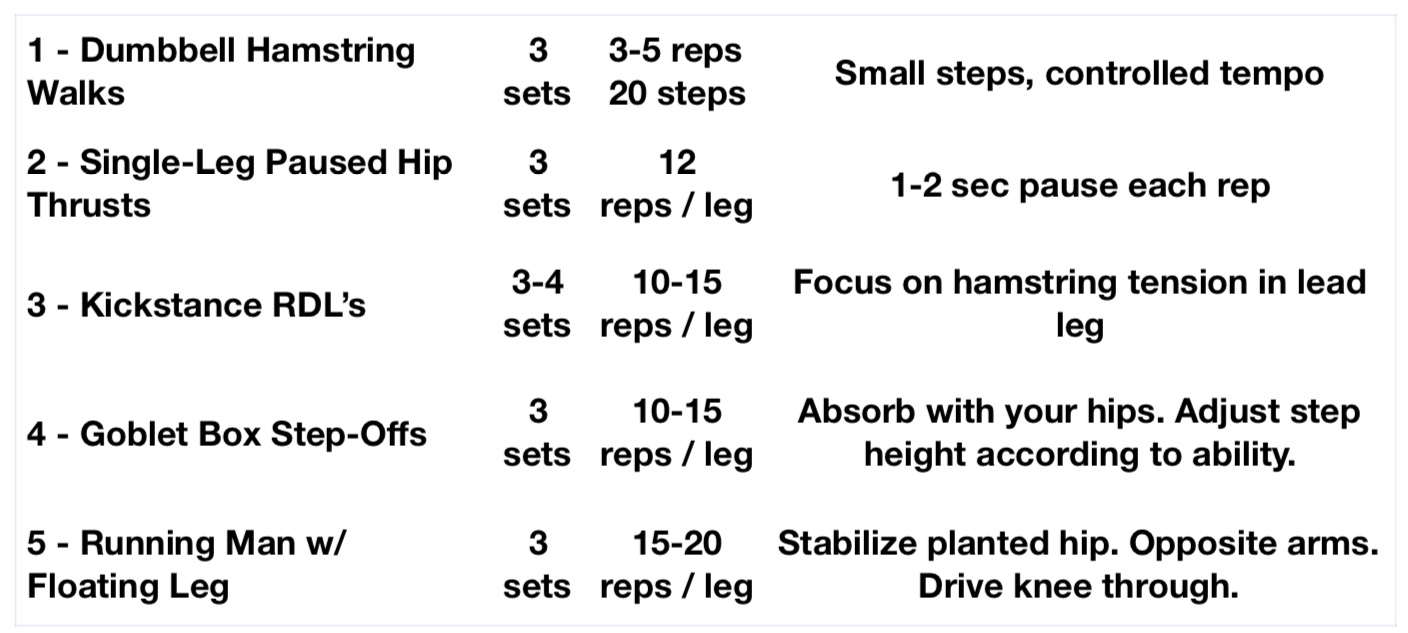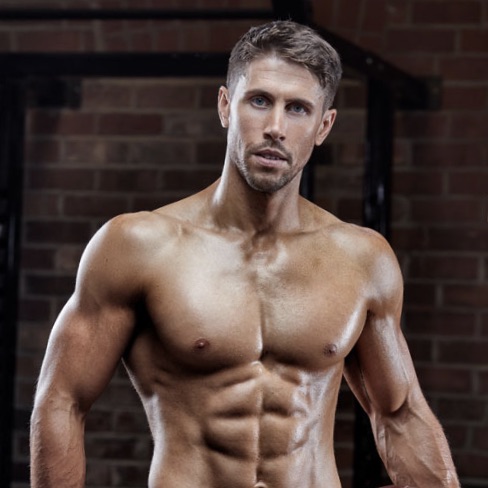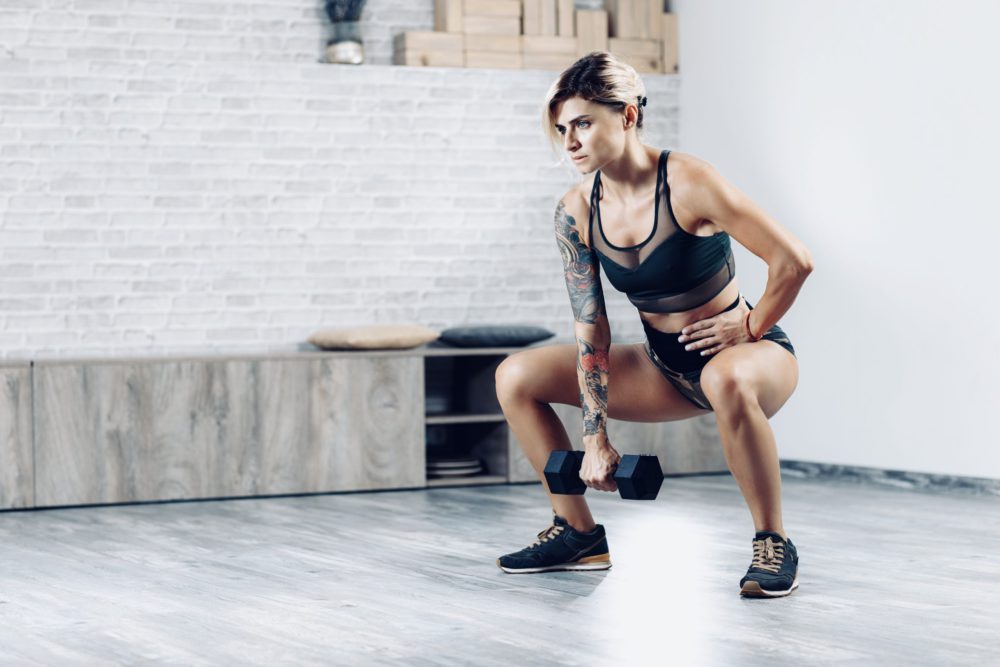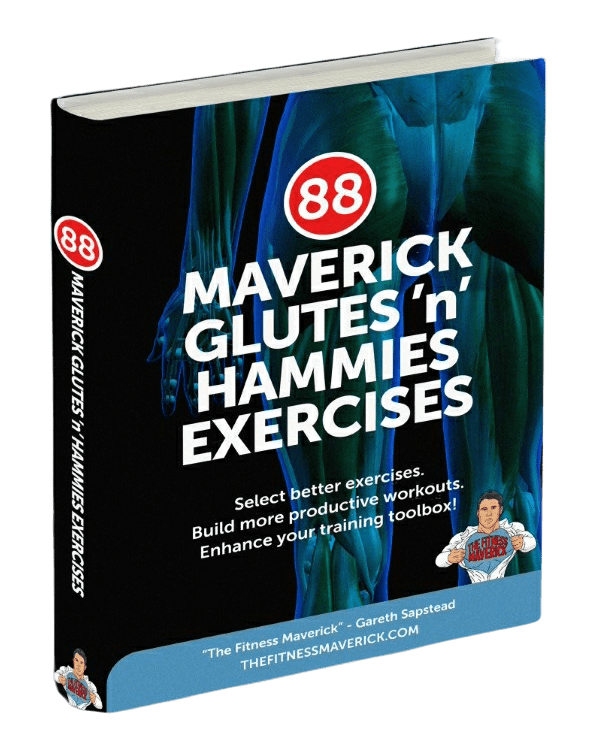There are 99 problems but a glutes and hamstrings home workout shouldn’t be one! Here’s an effective workout you can do with just one dumbbell. Case in point that you can indeed get in a great home workout, without forking out a ton on equipment. Let’s dive right in.
Home workout structure
If you’re training with limited equipment or loading options then some of your usual rules have to go out the window. Where before you’ll have started with big hitters (deadlift and squat variations, heavy bridges etc.), you now need to rethink that idea and start with more isolation-type exercises and those that don’t require much weight. If you don’t then you’ll end up doing tons of reps with weights that are too light.
Starting a glutes and hamstrings home workout with exercises that are a more targeted will help pre-fatigue your glutes and hamstrings. It’ll also help increase muscle awareness so when you go to your compound exercises you’re getting more out of them with less weight – you’re able to work that muscle harder because you’ve previously “found” it.
We know that in order to load a muscle effectively, overall we want to load through its entire range of motion, from origin to insertion. But, we also want to consider at what length we’re loading that muscle at. We can talk about concepts like loading a muscle in its lengthened or shortened position, or where it’s length-tension relationship is greatest blah, blah, blah… Or, a term I often like to use with my clients, which is easily relatable, is seeing an exercise as a “stretcher” or a “squeezer”. I go in to the benefits of categorizing exercises in this way in the Maverick Glutes and Hamstrings Guide.
Your muscles are more likely to fail first in their shortened position. By placing “squeezer” exercises at the start of your home workout you’re encouraging this to happen. “Stretcher” exercises can then be used in the middle of your workout to take your glutes and hamstrings through greater lengths, maximizing mechanical tension at that point. Then, you can finish with exercises that focus more on metabolic stress and ending with a good butt and hamstrings pump.
The exercises
One thing i’m always repeating to other trainers is that one must be able to justify – There are many ways you can justify the selection of an exercise, and for a particular individual, but “it’s hard” isn’t one of them. Here are the exercises you’ll be using.
Dumbbell hamstring walks
Dumbbell hamstring walks are relatively simple, but a mighty humbling way to start your workout. If your hamstrings or calves are out of condition you’ll really feel these. Also, cramping is common so good luck there. The idea here is to hit your hamstrings through some isolated knee flexion. By plantar-flexing your ankles (like a ballerina) you’ll create a co-contraction of your calves and hamstrings. This co-contraction increases hamstrings activation. This makes your hamstrings work hard without much need for weight.
Performing dumbbell hamstring walks first, will hit your hamstrings hard and warm up your glutes ready for the next step. Keep your hips up and glutes engaged. Walk the dumbbell up to the point just before you lose hamstring tension. You’ll know when. Walk it back down as far as you can, getting as long as you can with toes still pointed. You’ll need a dumbbell that rolls — the weight doesn’t matter too much — a hex dumbbell won’t work! Sub for a banded hamstring curl if you need to.
Sets/reps: Do 3 sets of 3-5 full reps (up then down is one) and don’t rush it.
Single-Leg Paused Hip Thrusts
Hip thrusts are a glute-building go-to. And for good reason. I class them as a “squeezer”, evidenced by the glutes shortened position your should be focusing on at the top of each rep. The bottom portion of the hip thrust isn’t so important as far as your glutes are concerned, but will help your hamstrings somewhat.
Using a single-leg variation with an added pause at the top is a simple way to increase tune under tension and difficulty, and without needing for using much weight, if any. Start these with bodyweight alone and work up to holding a dumbbell in a position that’s most comfortable.
Focus on pushing through your planted heel, engaging your butt cheek on the same side. Drive your other knee to the roof and get an extra hard squeeze for a second or two at the top. Keep your chin and ribs down and abs engaged. A couch, chair of bottom step will work if you don’t have access to a bench.
Sets/reps: Do 3 sets of 12 each side with a 1-2 second pause at the top. Take your time and focus on getting the most out of every rep.
Kickstance RDL’s
Kickstance Romanian Deadlifts (RDL’s) are somewhere between a single-leg RDL and your usual two-legged RDL’s. They’re a single-leg deadlift with some support from your back foot. They play an important role in this workout in targeting your hamstrings in a lengthened position – They’re a “stretcher”. By hitting your hamstrings already in the workout you’ll find these harder than usual, and your hamstrings will start hating you even sooner.
Focus on placing the most weight through your front leg, while the back should do very little work. This requires some awareness. If you can’t do this then using a split squat stand or foam roller for your back foot can help stop the cheating. You might want to swap this out for a single-leg RDL is you prefer it.
Sets/reps: Do 3-4 sets of 10-15 on each leg. If your weight is challenging enough then shoot for the lower rep range.
Box step-offs
Box step-offs are a mix between a lateral lunge and a squat, while the addition of a box takes you in to a greater deficit. The height of the box and degree of deficit are up to you. The greater the height you step off, the more you’ll load your glutes in their stretched position. Glute “stretchers” tend to activate more lower glute fibers, where if you’re capable of going deep then you’ll stretch and load these fibers even more. Having already hit your glutes with a paused hip thrust you should be feeling these by this point. I’ve nerded out about box step-offs previously at T-Nation here.
Hold the dumbbell in the goblet position as shown in the video. Alternatively you can hold it in your same side hand as the foot stepping off – The dumbbell hangs in front between your legs. As you step sideways off the box there’s a “braking effect” happening. The offside leg must step off and absorb the impact forces through the abductors, quadriceps, and glutes. This braking effect is a form of eccentric overload, which’ll be good for adding some meat on your butt and legs overall.
Sets/reps: Do 3 sets of 10-15 reps on each leg. For your home workout your bottom step could work well here.
Running Man
The “Running Man” challenges your glute strength in multiple planes, as well as your single-leg stability and coordination. They’ll also hit your hamstrings a little. I wrote about them here.
See these as a progression from your regular high-rep isolation booty-burner exercises. Sure, banded clams and monster walks are an option, but for more bang for your buck and a bigger challenge; running man will get you to the finish line in the right way!
Sets/reps: Do 2-3 sets of 15-20 reps on each leg. If your balance needs work then allow your non-planted foot to touch the floor on the way back each time.
Based on the volume prescription I’d recommend repeating the following glutes & hamstrings home workout twice each week, on non-consecutive days.

Want to build better glutes and stronger hamstrings?
Click here or on the image below to download the ultimate guide to glutes and hamstrings training

I build Olympians, Cover Models and those who want to look like them. Author or “Ultimate Abs” available in all good book stores.

